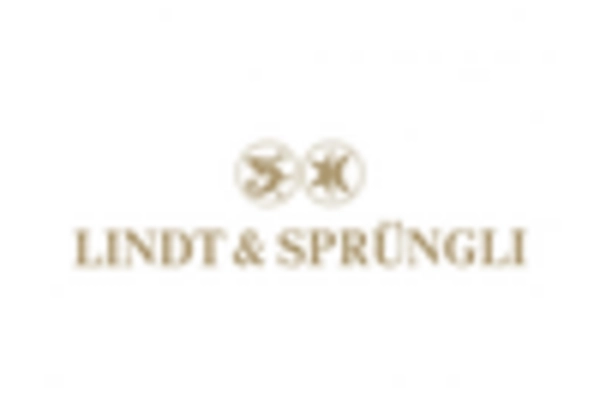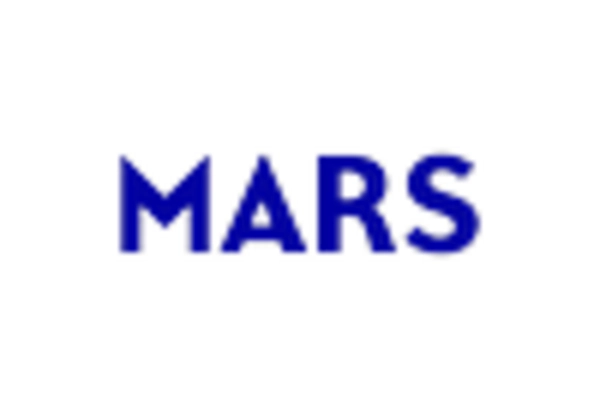The sugar free-chocolate market exhibits a dynamic competitive landscape, characterized by a growing consumer preference for healthier alternatives. Key growth drivers include increasing health consciousness, rising incidences of diabetes, and a shift towards low-calorie diets. Major players such as Lindt & Sprüngli (CH), Hershey's (US), and Mondelez International (US) are strategically positioned to capitalize on these trends. Lindt & Sprüngli (CH) focuses on premium product offerings, emphasizing quality and taste, while Hershey's (US) leverages its extensive distribution network to enhance market penetration. Mondelez International (US) adopts a dual strategy of innovation and sustainability, aiming to meet evolving consumer demands while reducing its environmental footprint. Collectively, these strategies shape a competitive environment that is increasingly focused on health, quality, and sustainability.
Key business tactics within the market include localizing manufacturing and optimizing supply chains to enhance efficiency and responsiveness to consumer demands. The competitive structure appears moderately fragmented, with several key players holding substantial market shares. This fragmentation allows for niche players to emerge, fostering innovation and variety in product offerings. The collective influence of these key players drives competition, compelling them to continuously adapt and innovate in response to market dynamics.
In October 2025, Lindt & Sprüngli (CH) announced the launch of a new line of sugar free chocolates, utilizing a proprietary blend of natural sweeteners. This strategic move is significant as it not only expands their product portfolio but also reinforces their commitment to quality and innovation. By introducing a premium sugar free option, Lindt aims to attract health-conscious consumers without compromising on taste, thereby enhancing brand loyalty and market share.
In September 2025, Hershey's (US) unveiled a partnership with a leading health food retailer to create exclusive sugar free chocolate products. This collaboration is strategically important as it allows Hershey's to tap into a dedicated consumer base that prioritizes health and wellness. By aligning with a retailer known for its health-focused offerings, Hershey's enhances its visibility and credibility in the sugar free segment, potentially driving sales growth.
In August 2025, Mondelez International (US) launched a sustainability initiative aimed at reducing sugar content across its product lines, including sugar free chocolates. This initiative is crucial as it aligns with the growing consumer demand for healthier options while also addressing environmental concerns. By committing to sustainable practices, Mondelez positions itself as a responsible brand, likely appealing to environmentally conscious consumers and enhancing its competitive edge.
As of November 2025, current trends in the sugar free-chocolate market indicate a strong emphasis on digitalization, sustainability, and the integration of AI technologies in product development and marketing strategies. Strategic alliances are increasingly shaping the competitive landscape, enabling companies to leverage each other's strengths and resources. Looking ahead, competitive differentiation is expected to evolve, with a notable shift from price-based competition to a focus on innovation, technology, and supply chain reliability. This evolution suggests that companies that prioritize these aspects will likely gain a competitive advantage in the increasingly health-conscious market.

















Leave a Comment